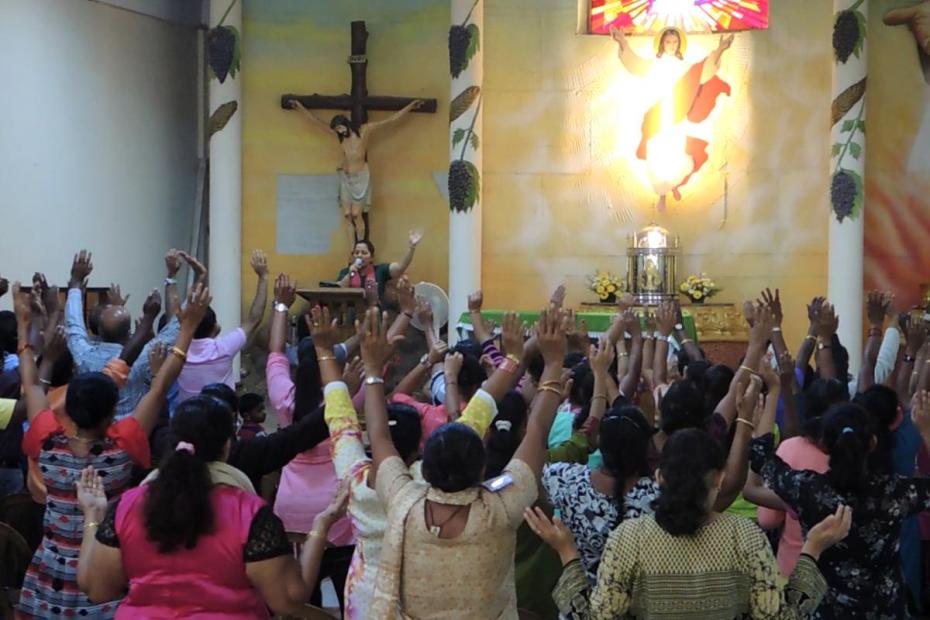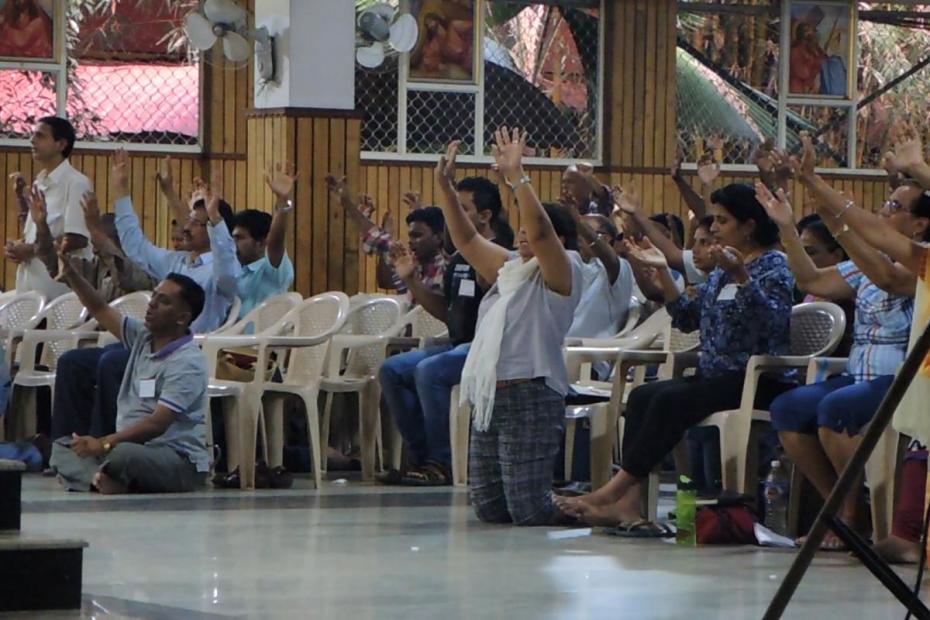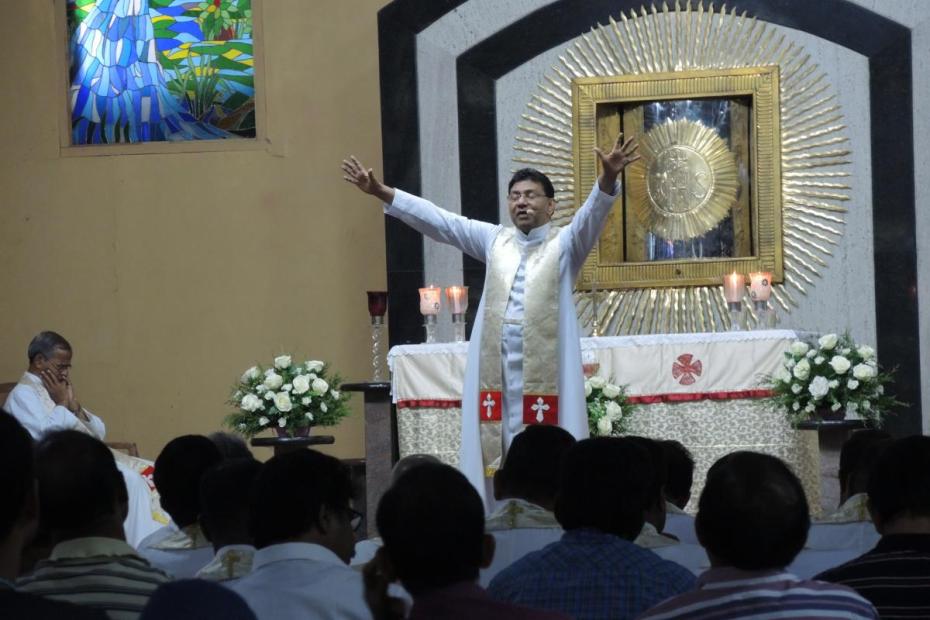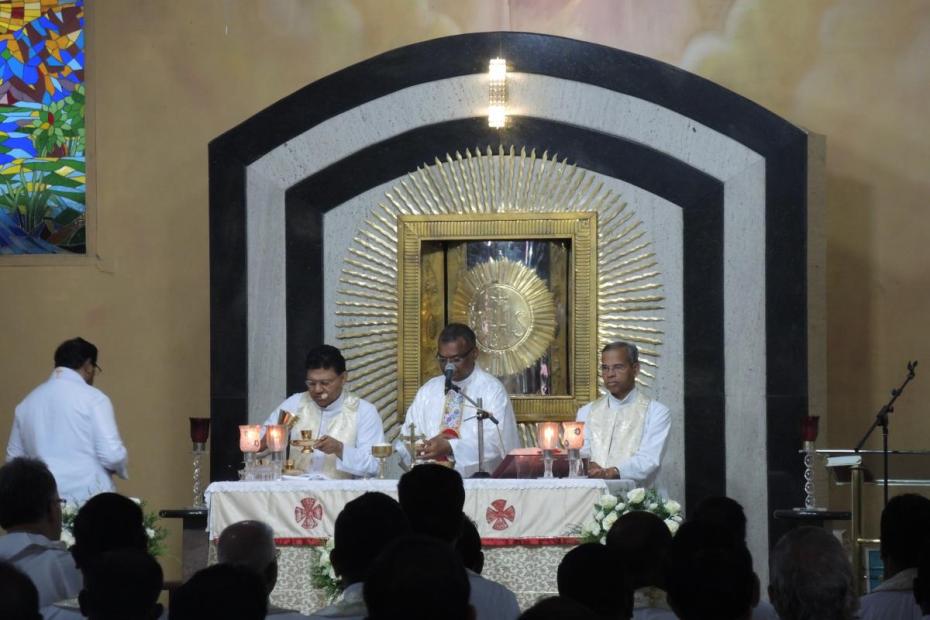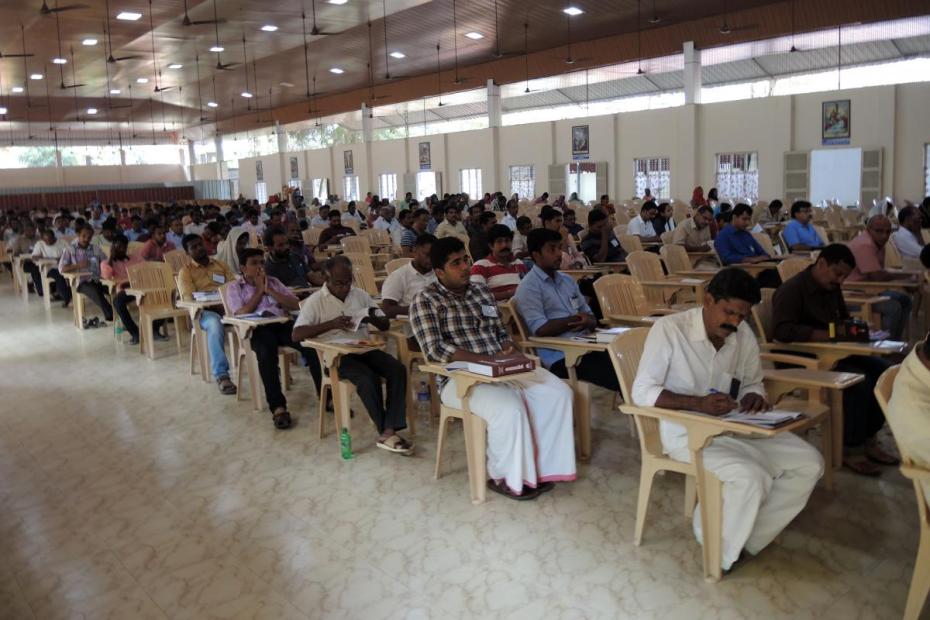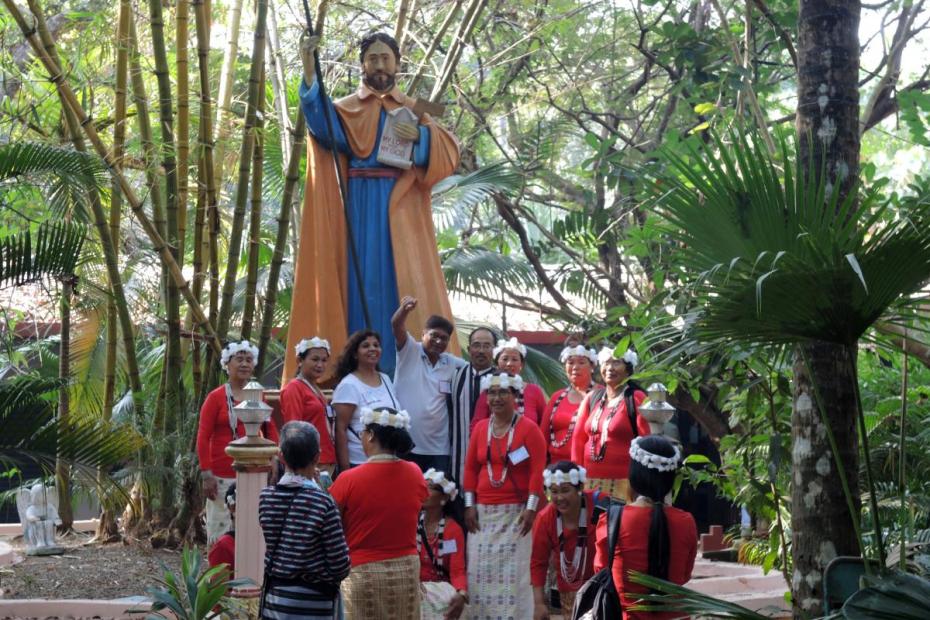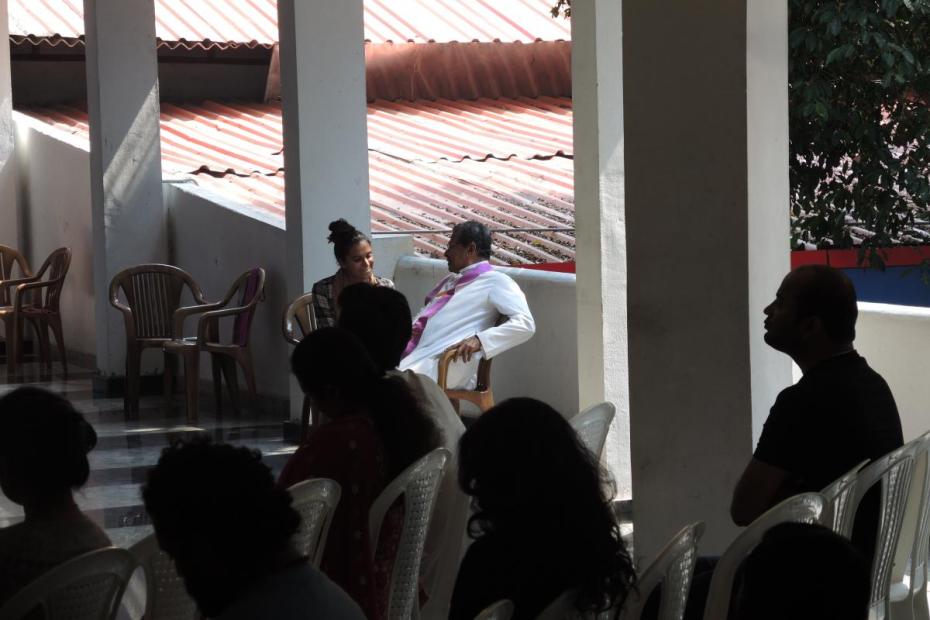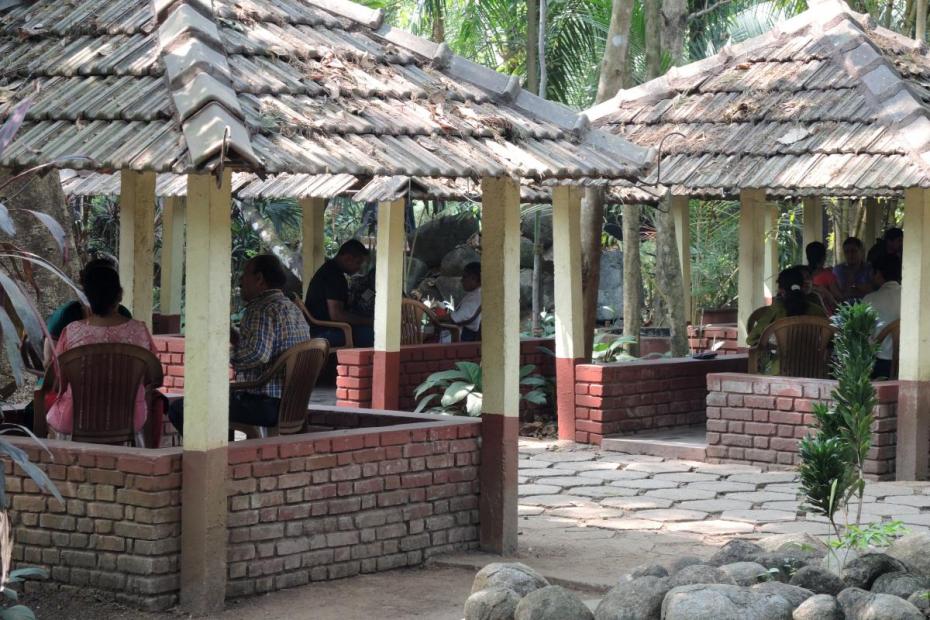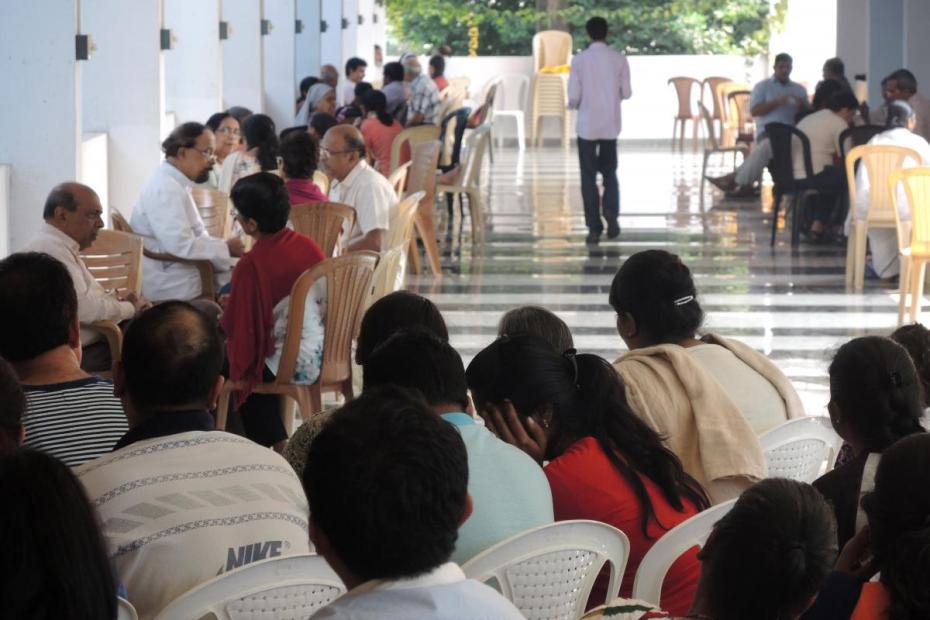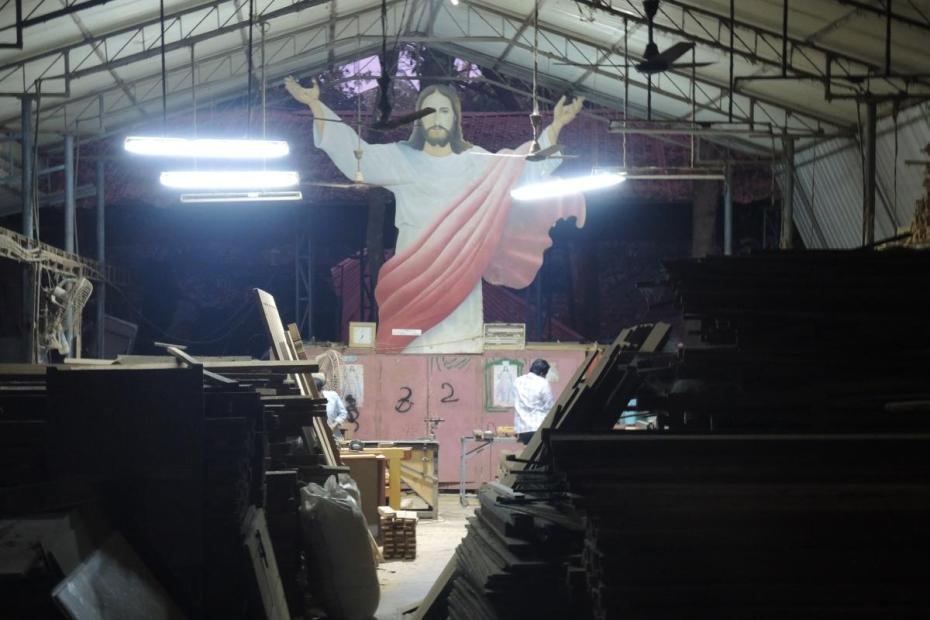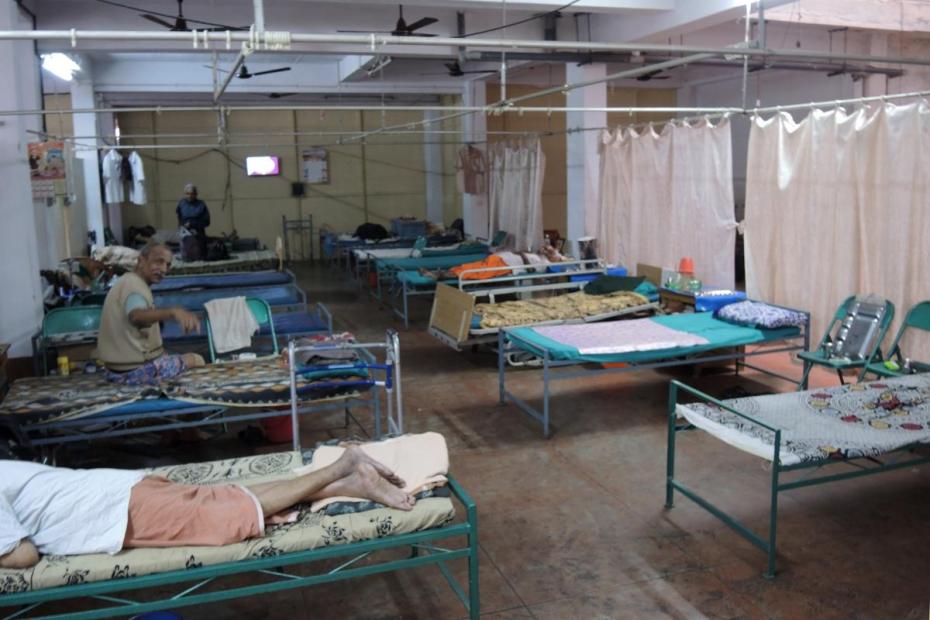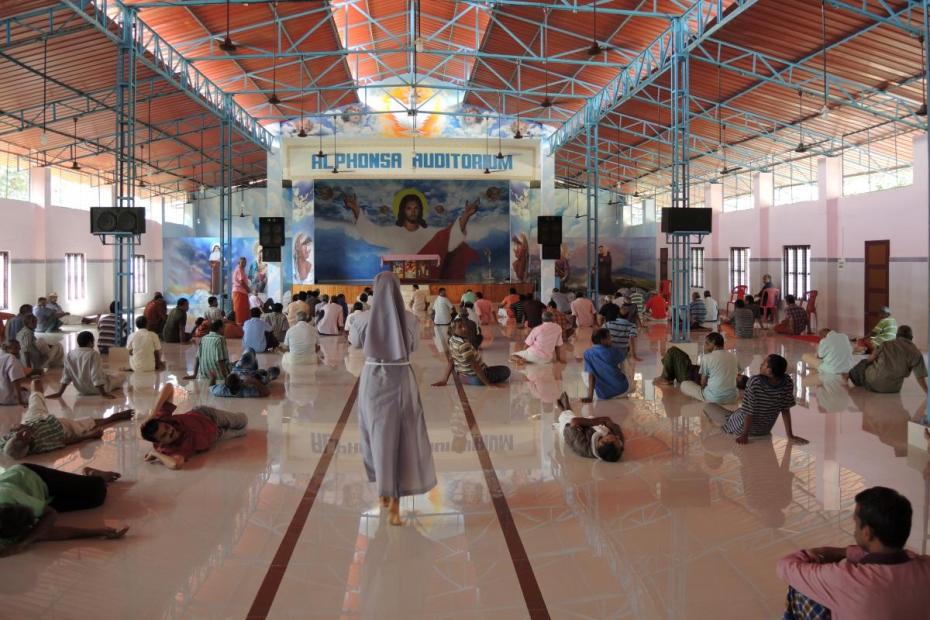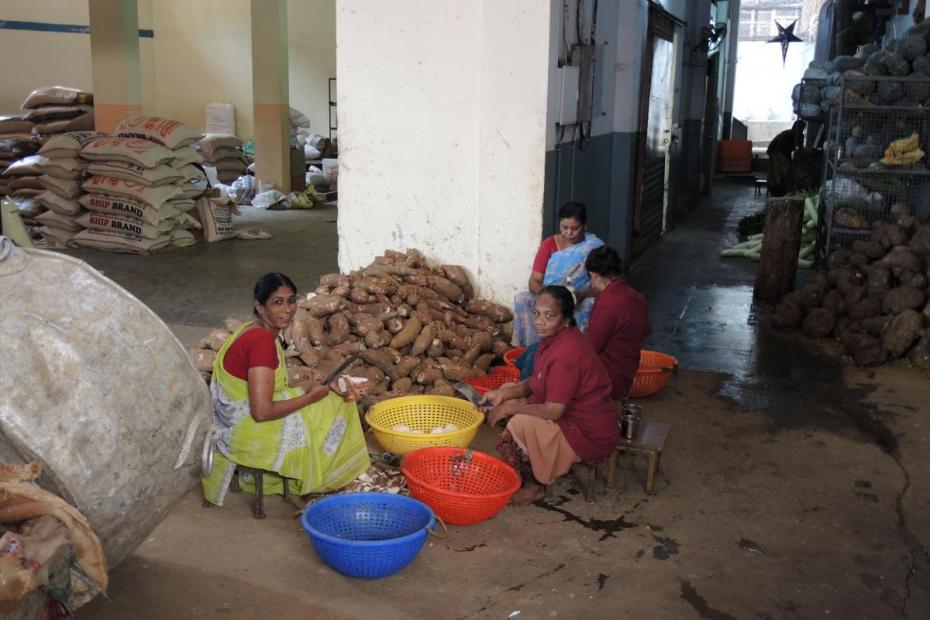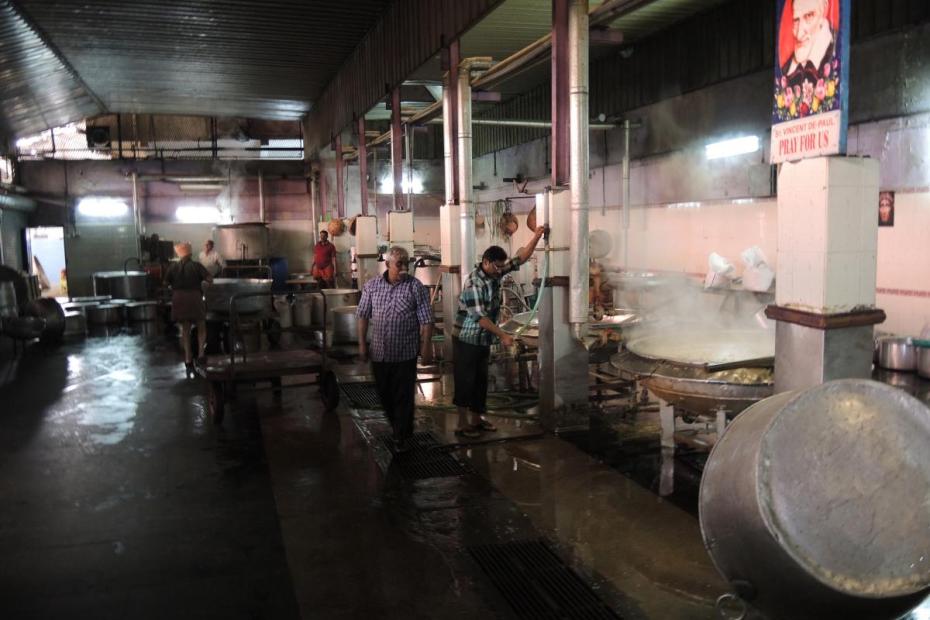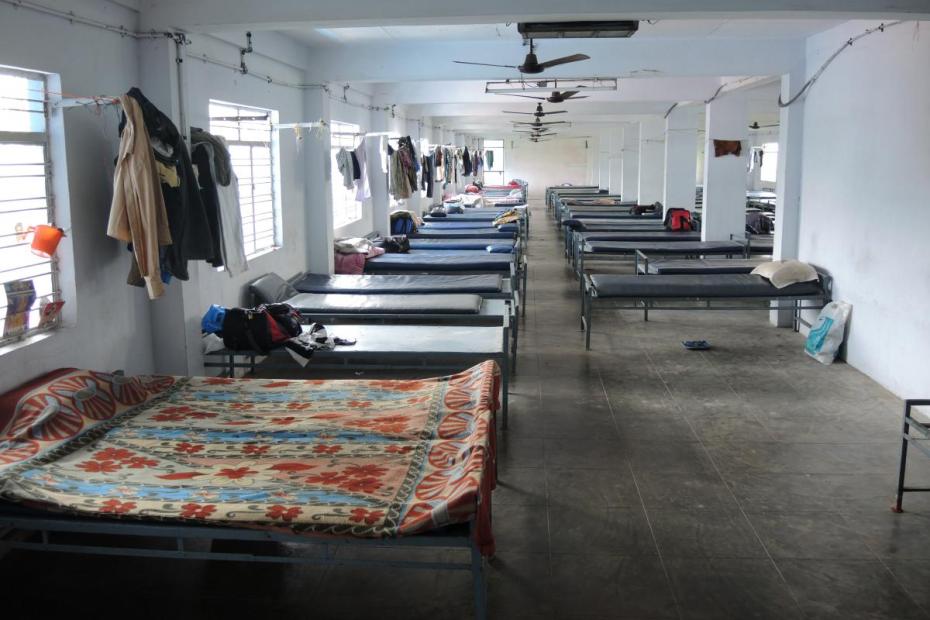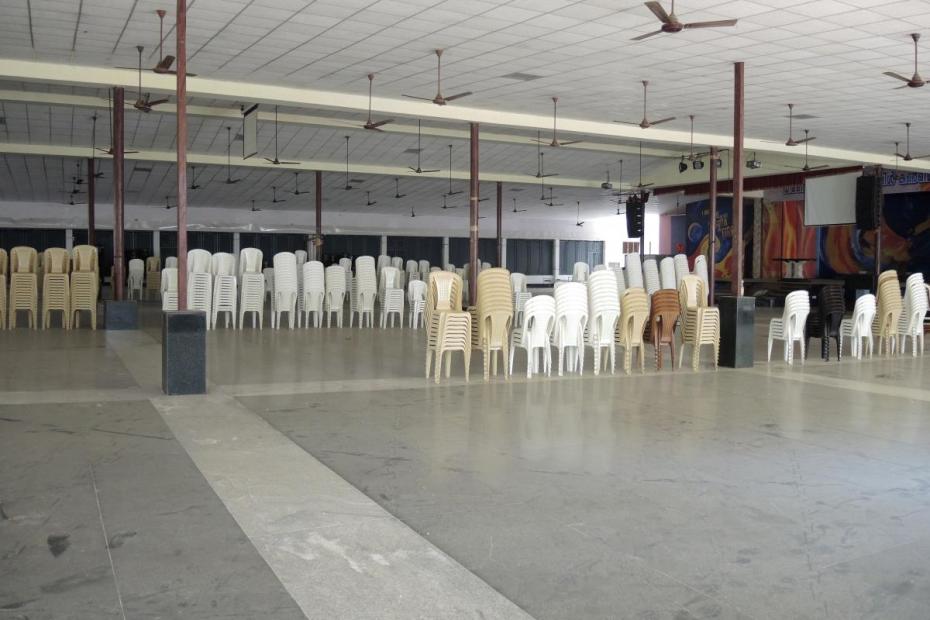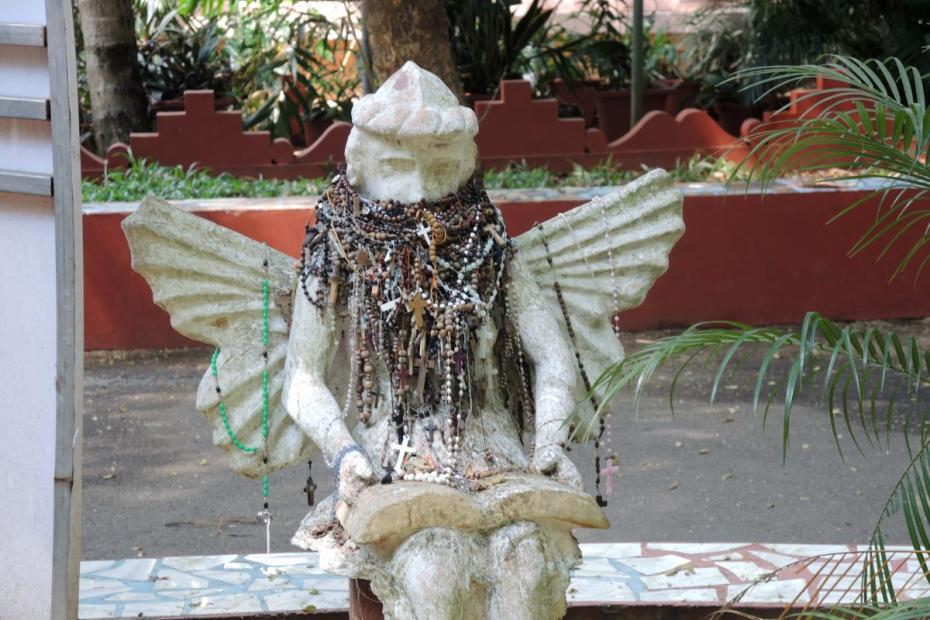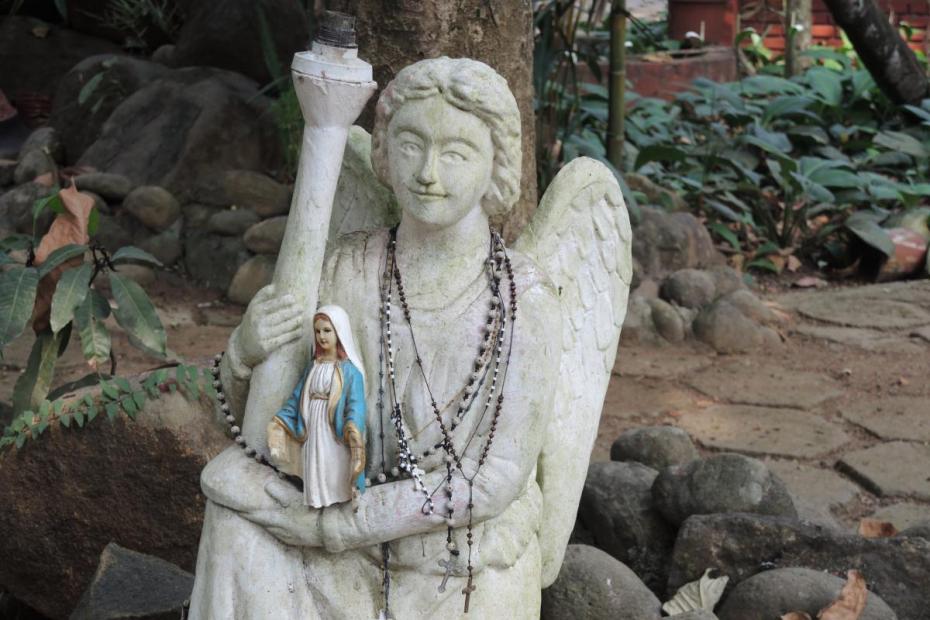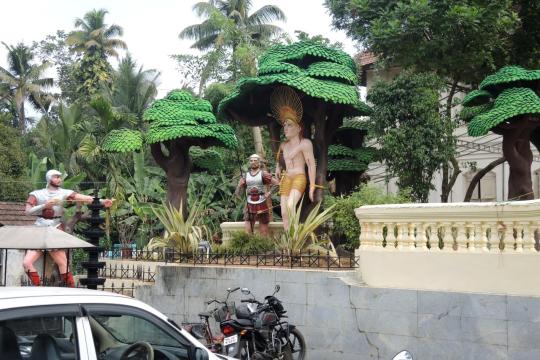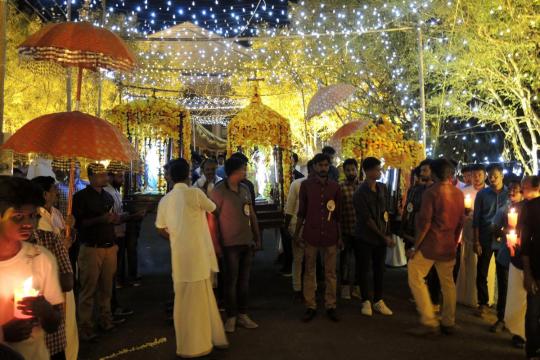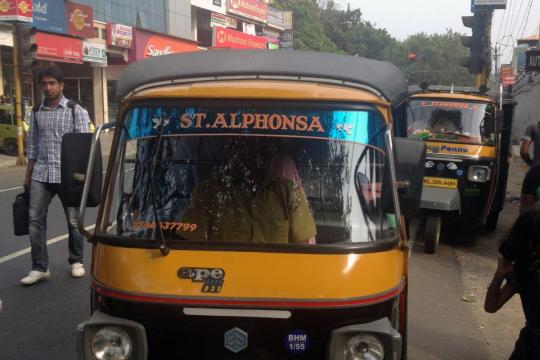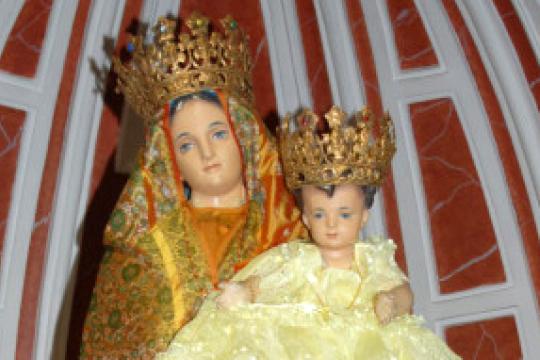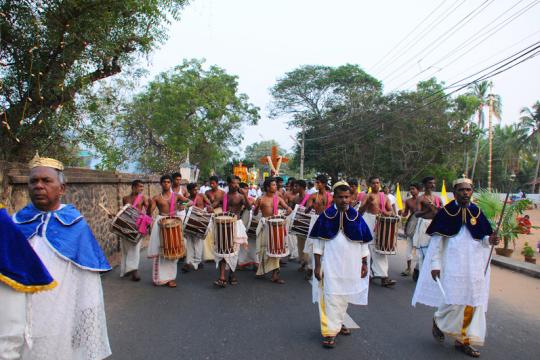Retreats and retreat houses are part of the Catholic landscape in many countries around the globe, typically part of the lives of clergy and vowed religious but not typically part of the ordinary, or even occasional, experience of the great majority of lay Catholics. It is hard to think of examples where a retreat house serves as a magnet to ordinary lay Catholics, drawing large numbers of people to come on their own. Divine Retreat Centre, which claims to have ministered to 10 million retreatants since its founding, is the remarkable exception.1
Founded in 1987 by Vincentian priests to build on the success of their congregation’s parish retreats, Divine Retreat blossomed quickly into the largest Catholic retreat center in the world, an integral part of the spread of charismatic Catholicism in India. Launched at a Christian ashram in Potta (it is sometimes still referred to by that place name), it expanded onto the premises of a hospital that was closing, Divine Hospital, and later expanded to a second campus. Its largely volunteer staff numbers in the hundreds.
Today, two Divine Retreat campuses in the village of Muringoor, Kerala, host retreats in seven languages, 52 weeks a year. Even in a region of India with a remarkable number of full churches, Divine, and the charismatic movement it draws from, is a phenomenon. In the high season, April and May, during school breaks, the center’s attendance swells to 4,000-5,000 a week on each campus. The center is designed not to require booking in advance, but to accommodate whoever shows up for the start of any week’s retreat, and is even served by its own rail station.
At the retreat reported here, in the off-season in January, almost 500 people were gathered on the “English” campus for retreats in: English (about 220); Konkani, the language of Goa (about 100); Kannada, the language of Kolkanna (just over 100); and Hindi (about 50). The original campus, across the state highway, conducts retreats in Malayalam, the language of Kerala, and in Tamil (Tamil Nadu) and Telugu (Andhra Pradesh). According to one priest working there, the Malayalam campus had about 1,200 Malayalam retreatants that week, along with about 200 Tamil speakers and 20 Telugu speakers.2 Though the retreats are framed according to two powerful transnational religious frameworks — charismatic and (Latin Rite) Catholic sacramental practice — the cultural and linguistic diversity of Indian Catholicism is still evident to some degree at Divine Retreat. Each linguistic-cultural group has a somewhat different take on the practices at the retreats, apparent in the movement, expressiveness, and music of the retreatants.3
Interweaving charismatic and sacramental Catholicism
A retreat at Divine Retreat remarkably synthesizes two forms of Christianity — one charismatic, drawing from the practice, language and theological priorities of Evangelical Protestantism, and the other very Catholic in its sacrament-centeredness.4 Aside from the sheer size of the Divine Retreat operation, that synthesis may be the most fascinating thing about the place. At alternating moments, and sometimes simultaneously, retreats at Divine seem very strongly Catholic, and very strongly Evangelical. In the course of the day, a retreatant probably spends about as much time with hands in the air saying “Praise the Lord” or “Alleluia,” as he or she spends in quiet devotion before the Blessed Sacrament. Sometimes the Eucharistic adoration itself is full of Alleluias, frenzied waving of hands, occasional dancing in place and speaking in tongues. At night, from 9:30 to 10 p.m., the adoration is silent.
Catholic traditionalists would likely be enamored by the focus here on the Eucharist and Eucharistic adoration, on confession and the Rosary, but Divine Retreat experience differs from Catholic traditionalism in a great many ways. Indeed, the word traditionalism does not do justice to the experience. The talks strongly emphasize traditional gender roles in the home (hardly radical themes in India), and focus on a world gone astray due to the effect of sin, but beyond practice of Eucharistic adoration and the Rosary, which are very much part of Catholic practice in southern India today, the retreats don’t devote any time to valorizing pre-Vatican II devotionalism, and the kinds of traditional saints’ devotions that are popular with South Indian Catholics are entirely absent. When the Catholic past is referred to in parish and church life, it is not presented as an ideal to be recovered. Most often, the past is framed as time when the Catholics merely went through the motions, before they fully accepted Jesus and came alive in Him. At Divine, the past is typically something to be turned away from and overcome, in the face of a God who always hopes for something new and better.
Praise, preaching and prayer
Retreats run from late Sunday afternoon until Friday afternoon, though many people arrive Sunday morning to join a full schedule of preparatory prayer and praise sessions that day. Each morning thereafter, praise music starts playing over loudspeakers before 6 a.m. to wake the retreatants, and each day ends at 10 p.m. after 30 minutes of silent Eucharistic adoration.
The days are filled mostly with praise music to warm up the crowd, and hour-long preaching and witness talks by men and women lay evangelists, priests and religious sisters. Musicians often ask retreatants to stand and wave or even to perform particular movements to go along with the songs. Speakers, to keep the audience alert, often punctuate their talks with call-and-response “Praise The Lord” and “Alleluia” calls, the former in English even when the retreat is in another language. Meals move fairly quickly, with diners eating as they stand at tables in order to move the crowds through efficiently. There is some free time to walk around, but retreatants are not normally allowed to leave the campus. Each day also includes some time praying the Rosary, Eucharist — with homilies that can last 30 minutes to an hour — and Eucharistic adoration. Overall, though the day is marked by listening, singing and praise far more than by silence.
Speakers alternated between themes of sin and love, God’s power and Satan’s influence. “You are beautiful beyond description. I stand in awe of you,” retreatants sang one morning during the retreat, though they also got the message consistently that even though they have sinned, they too are beautiful beyond description to God. Particularly in the first two days, the retreat dwelt on the effect of sin in the world, even as speakers stressed that God is in charge of all things, big and small, and an “awesome, living, loving God”. Speakers described Satan as an active presence in the world, the source of evil who has been messing up God’s plan ever since Adam and Eve in the garden, but who “will flee at the name of Jesus.” “Confess that Jesus is Lord, and you will be saved” (Romans 10:9), one repeatedly promised, as he told all to remember, “I can do all things through Him who strengthens me” (Philippians 4:13). Another speaker claimed, “we are all waiting for someone to tell us how sinful we are… Everyone is waiting for someone who knows me and loves me to tell me how sinful I am. It is a liberating experience.”
Everyone was encouraged to have a Bible and to use it. Speakers frequently cited scripture, giving the citation as a source of authority and a means to look the passage up later, and then getting the retreatants to repeat the passage out loud several times to remember it. The act of saying it out loud with the speaker gave the retreatant a certain kind of ownership of it, akin to the way the words of a vow or oath are repeated by the person making the vow. Speakers referenced the New Testament at least 2/3 of the time, but occasionally used the Old Testament, sometimes in strange ways, such as when a speaker dwelled on David’s slaying of Goliath as the example of the power of the Holy Spirit.
The retreat, in its emphasis on individual and familial healing through encounter with Jesus and the Holy Spirit, focuses on the interior self and one’s relationship with one’s family. The concept of sin articulated in the talks paid almost no attention to failure to be of service to the poor. Christianity was projected as being mostly concerned with interior conversion to Jesus, and fostering healthy family life. To be fair, several of retreatants were people who devote themselves to working for the poor in significant ways — one man, for example, was a lay prison chaplain, living on very little, and the Divine Retreat was a way for him to keep himself charged up and Jesus-centered. And Divine Retreat Centre itself sponsors an array of social ministries on campus nearby — an AIDS hospice, an alcohol/drug detox and recovery center, and a 300-person mental health asylum among them. But the emphasis in the retreat is on deep immersion into the Christian self, turning away from sin, and making a decision to give oneself over to Jesus fully. One lay minister suggested that for married people, God must be their number one priority, family number two. Their work to support their family is number three, and “ministry,” “service for the kingdom” should come fourth. But even then, his call to “work for the Lord” was to “go to a prayer meeting with your family,” with no mention of service to the poor.
Although it was not possible to fully compare each language group’s retreat, given both time and language constraints, a few significant differences were apparent. The English-speaking retreat was also the most westernized in other ways besides language. The song was far less discernibly Indian, and closer to evangelical musical models from the west, though as in much of India, the synthesizer was still the instrument of choice. The Western qualities likely reflect the educational attainment, urban experience, and globalized linkages of English speakers, who by definition are people who are educated in elite schools and who often work in English-speaking, transnational settings. The Kolkanni retreat, for persons speaking the language of Goa, was probably the most sedate, relatively speaking, and the Hindu and Kannada retreats were the most energetic and emotive, and the music was the most distinctively Indian.
The week closed with a ceremony of anointing, where clergy lay hands on each of the participants individually to pray for the Holy Spirit to descend upon the faithful.
Affirming faith, overcoming addiction, and healing
Though not terribly expensive to attend — 300 rupees ($5), which includes meals and a bunk in hundred-person halls, with options for rooms for families at higher cost — the retreats entail a big commitment for those who attend. Many said that they traveled 10 hours, or even several days, by bus or train. Because school was in session there were few school-age children here during this visit, but still, the majority of people come here the way they do everything in India: with their families. In conversations, one man said he was here for his 14th time, another his ninth. When asked for a show of hands, about a fifth of the English language retreatants indicated they were here for the first time. All seemed to come knowing to expect a full immersion experience in praise and scripture.
It is hardly easy, given the often intensely personal nature of the issues involved, to determine from retreatants themselves what draws them to the retreat house. Many alluded to issues of addiction as a reason that many others attended, or referred just to losses in people’s lives, but few spoke about themselves, except one young man who found himself in an unexpected job transition, and finally had the time to come here. Repeat visitors suggested that they returned because they had found joy here and it helped them learn about the Bible. A priest who often visits here to hear confessions and preach said that he often hears people who struggle over lack of faith, and seemingly unmet prayers. Both of these themes arose in the preaching. It is often said here that the charismatic movement in India serves an enormously important role in helping Catholic alcoholics come to terms with their drinking and find a new framework for building new lives, reborn in the Spirit. Several clergy indicated that based on their experience, alcohol abuse and ongoing work to recover from it drove about one-quarter of attendance, including spouses and children of alcoholics.
In public witnessing sessions, people stepped up to tell of family issues, of minor health issues and even a stroke that were healed at, or in the aftermath of, previous retreats at Divine. The many speakers who filled the days probably gave the best insight into the issues that people faced, as they tried to connect with retreatants to let them know that God would hear them and help them find an answer to those particular needs. Those same speakers often sat and listened to retreatants during individual counseling sessions on Wednesday. Several speakers spoke of how many times they hear from retreatants who are distraught over family issues, or have resentments and anger that they can’t let go of. Several references were made to persons who felt unloved by their parents and who suffer because of it, or to people crushed because a spouse does not love or attend to them as much as they had hoped. (One retreatant who “witnessed” to the crowd identified the lack of parental love as the primary difficulty that he learned here to acknowledge and overcome). Other speakers referred to young couples who were having trouble conceiving. Perhaps most profoundly, one speaker simply summed it up when she asked retreatants to “give your brokenness and shattered dreams to Jesus.” On the surface, this looked in no way like a group of broken people, but in truth, the affirmation of that message was loud. Speakers seemed to know that these themes would resonate with retreatants.
Messages about how people are healed were communicated in two very different ways. On the one hand, a long list was read of reports made to the staff about physical healing that had happened at the Divine Retreat center for people present that week, presumably some from prior visits. It included six cases of healing from arthritis, seven healings of migraines, 10 of chronic back pain, two of asthma, three for infertility, and others for improved eyesight, hearing, and more. Large numbers of healings referenced non-health issues: 10 from being entangled in court cases, 16 “from the slavery of addiction to alcohol, smoking or drink,” five from suicidal tendencies, four from unemployment. On the other hand, retreatants received many messages about God helping them to live with and through their challenges. “Don’t say,” one preacher extolled, “Why is God not changing my destiny? Change the destiny of others and be a blessing in the life of another.” Miracles happen, and retreatants were encouraged to believe God could accomplish them, but they were also given ways for living when it does not happen.
Espousing traditional gender roles
Unlike many religious events worldwide, men actually slightly outnumbered women on the retreat. That was even more apparent at the Malayalam retreat on the other campus.
Though the retreats focus to a significant degree on marriage and family, with few exceptions men and women sat on opposite sides of the room, as is typical in Indian churches. Only on one occasion, a Mass, were “legally married” couples called to sit together.
Talks that dealt with family strongly emphasized the male as the head of the household. Fathers were strongly encouraged by a lay preacher, using scripture, to be ready to admonish and reprove children, not the be afraid to spare the rod. Being willing to beat a child in a timely manner, at a moment when the child understood why, was described as an important parenting skill. In a talk on the Ten Commandments, strong emphasis was placed on the absolute sinfulness of any sex outside of heterosexual marriage. A great deal of time was given to preaching about how ideal couples and parents should behave with one another. As noted above, after God, retreatants were told, family comes first, then one’s job to support the family, and then anything else, including ministry. Perhaps the only thing that might be typically controversial about this framework in India is the suggestion that God comes over family. One place where Indian cultural norms were upended was when a preacher suggested that those who could not conceive should consider adoption, which is rare in India still.
Efficient retreats run by religious and volunteers
Divine Retreat Centre is a massive operation. It is run by a small number of Vincentians, and staffed by a much larger group of people. Hundreds of volunteers, mostly retirees, spend months or more at a time staffing the center, along with priests and nuns from a variety of orders, and lay evangelists invited to preach. Its kitchens and cafeterias can feed people simply and quickly during their hour and a half long meal breaks, and the centre even has its own dairy and piggery, and raises some food itself. Lay charismatic preachers, who give talks that often could be characterized as “witness” in the framework of charismatic ministry, represented more than half of the speakers.
In the last five or more years, attendance is said to have waned somewhat. Some wonder whether the decline is due to an increase in the number of competing retreat houses — one claims that there are more than 90 now in Kerala state alone — while another says that the movement has struggled to stay as fresh as its initial blossoming. By any other standards in the world, though, attendance and enthusiasm remains remarkably high.
- 1The 10 million figure comes from the Center’s website: http://www.drcm.org/about-us/overview, accessed January 23, 2018. It is especially notable in a country with just over 21 million Catholics today.
- 2The entry here reflects participation and observation primarily at the English-speaking retreat beginning on January 14, 2018. Particular thanks are due to Fr. Augustine Valoorian, VC, director of the English campus, for his kind hospitality and openness to showing various elements of the Divine ministry, including the homes for the physically and mentally ill and for drug and alcohol rehabilitation on several campuses; and to Mathew Schmalz, who was a great companion on the retreat and who made it easier for me to be present occasionally at the other language retreats. The counts for attendance on the English campus are based on the author’s counts at various sessions. The English campus was also host to a retreat for 32 priests from Sri Lanka, which certainly increased the number of clergy on campus, and brought the total to about 500.
- 3Ultimately a number of multilingual retreatants told me that they had changed which retreat they were part of, because it better suited them, even though the order and format of the retreats was ostensibly the same for all the retreats. Interestingly there is a Syro-Malankara church abutting the campus (along with a large Syro-Malabar parish about 1 km away) but Syro-Malankara practice was not immediately visible as a part of the retreat, and the Syro-Malabar liturgy was not directly part of any group’s retreat on the English campus.
- 4The practice at Divine Retreat grew out of the American-born Charismatic Catholic movement, but has to a significant degree transformed and transcended that movement.
